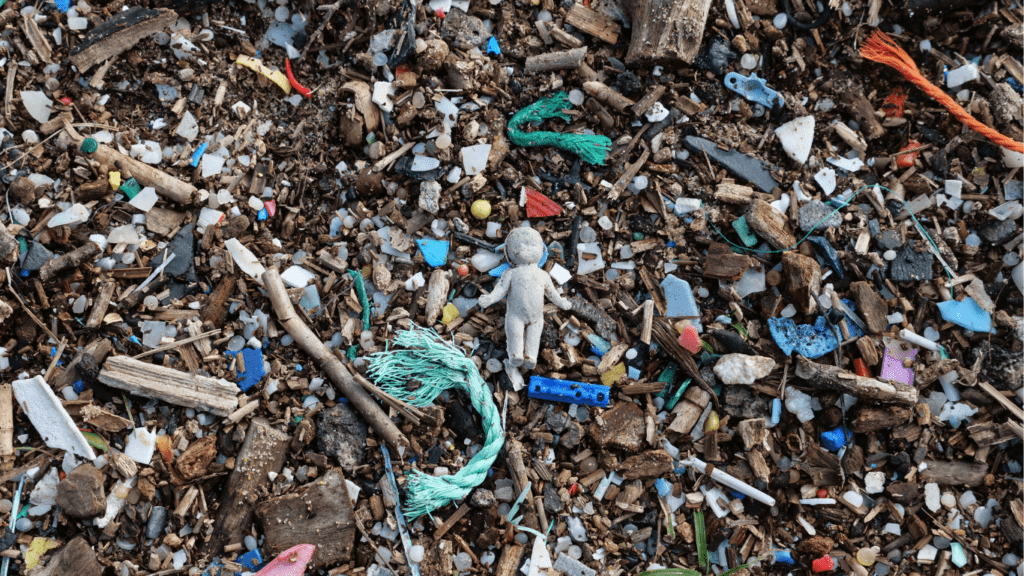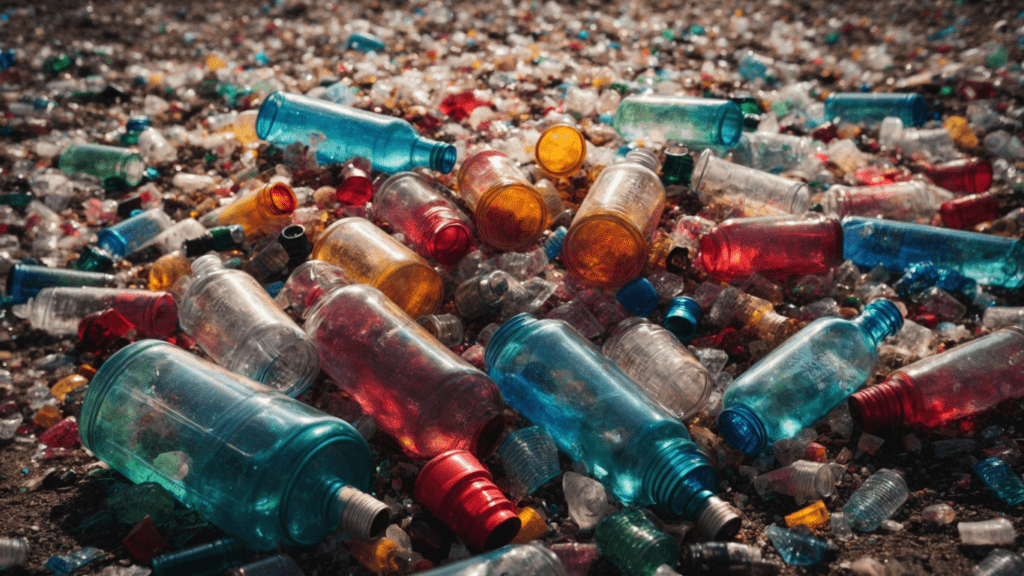Overview of Plastic Pollution
Plastic pollution negatively impacts ecosystems, wildlife, and human health. Fully grasping its causes and effects is essential for mitigating damage.
What Is Plastic Pollution?
Plastic pollution refers to the accumulation of plastic products in the environment that adversely affects wildlife, habitats, and humans.
This contamination arises when plastic debris, ranging from large items like bottles and bags to microplastics, accumulates in natural settings. Not biodegradable, plastic persists in ecosystems for hundreds of years, posing long-lasting threats.
Sources of Plastic Pollution
Sources of plastic pollution include various human activities and product lifecycles:
- Consumer Products: Single-use plastics (e.g., straws, cups, cutlery) often end up in oceans and waterways.
- Industrial Processes: Manufacturing waste and plastic pellets or nurdles that spill into the environment contribute significantly.
- Improper Waste Management: Inefficient recycling systems and landfill leakages result in substantial plastic discharge.
- Marine Activities: Fishing gear, packaging, and ship-generated waste pollute marine environments.
- Agricultural Practices: Use of plastic films and packaging in agriculture leads to soil contamination.
Understanding these sources helps in developing targeted strategies to combat plastic pollution.
Environmental Impact of Plastic Pollution

Plastic pollution affects not only marine life but also terrestrial ecosystems. The environmental impact is vast and long-lasting due to plastic’s persistence.
Effects on Marine Life
Marine life suffers due to plastic waste. Marine animals, including fish, seabirds, and turtles, ingest plastic debris, mistaking it for food. This ingestion leads to malnutrition, intestinal blockage, and even death.
Studies show that over 700 marine species have encountered plastic pollution. Microplastics, those smaller than 5mm, enter the food chain, affecting organisms at all levels. Coral reefs, essential for marine biodiversity, experience damage due to plastic debris entanglement, which causes physical harm and disease.
Consequences for Terrestrial Ecosystems
Terrestrial ecosystems, from crops to wildlife habitats, face significant challenges due to plastic pollution. Plastic waste disrupts soil quality, affecting plant growth.
Agricultural soils, contaminated by plastic mulch and other synthetic products, see decreased fertility and water retention. Terrestrial animals, such as cows and deer, ingest plastic, leading to health complications.
Additionally, mismanaged landfills contribute to wider pollution, dispersing plastic waste into surrounding environments and water bodies, exacerbating the problem.
Human Health and Plastic Pollution
Human health is deeply affected by plastic pollution, leading to numerous concerns that need addressing to ensure safety and well-being.
Exposure to Harmful Chemicals
Plastics release harmful chemicals into the environment. Chemicals like bisphenol A (BPA) and phthalates, commonly found in plastic products, can leach into food and drinks.
These chemicals mimic hormones, disrupting endocrine functions and increasing the risk of health problems such as cancer, reproductive issues, and developmental disorders. Regular exposure occurs through routine activities like eating, drinking, and using plastic containers.
Microplastics in the Food Chain
Microplastics contaminate the food chain. They are tiny plastic particles that can be ingested by marine and terrestrial organisms.
- Consumption of seafood and other animals affected by microplastics exposes humans to these particles.
- Studies have found microplastics in salt, honey, and bottled water.
- Chronic ingestion can lead to inflammatory responses, tissue damage, and a potential increase in long-term health risks.
Understanding the impact of plastic pollution on human health reveals the urgent need to control plastic waste.
Strategies to Reduce Plastic Pollution
Addressing plastic pollution effectively requires a combination of regulatory measures and proactive community and individual actions.
Regulatory Measures
Governments play a crucial role in managing plastic pollution. Enforcing bans on single-use plastics, such as straws and bags, can substantially reduce waste.
Implementing extended producer responsibility (EPR) ensures manufacturers take responsibility for plastic waste they produce. Enacting strict laws on plastic production, consumption, and disposal can also drive significant reductions.
Community and Individual Actions
Communities and individuals contribute significantly to reducing plastic pollution. Using reusable items, like water bottles and shopping bags, cuts down on plastic waste.
Participating in local clean-up drives helps remove existing pollution. Supporting businesses that prioritize sustainable practices adds market pressure for eco-friendly products. Educating others about the impact of plastic pollution strengthens collective efforts.


 is a passionate advocate for organic farming and sustainability, contributing extensively to Eco Elegance Technique. With a deep understanding of sustainable agricultural practices, Steveno has focused his career on educating others about the environmental benefits and challenges of organic farming. His work emphasizes the importance of soil health, biodiversity, and ethical farming practices. Steveno’s insights have helped shape the platform’s commitment to promoting eco-friendly solutions in the beauty and fashion industries.
is a passionate advocate for organic farming and sustainability, contributing extensively to Eco Elegance Technique. With a deep understanding of sustainable agricultural practices, Steveno has focused his career on educating others about the environmental benefits and challenges of organic farming. His work emphasizes the importance of soil health, biodiversity, and ethical farming practices. Steveno’s insights have helped shape the platform’s commitment to promoting eco-friendly solutions in the beauty and fashion industries.
